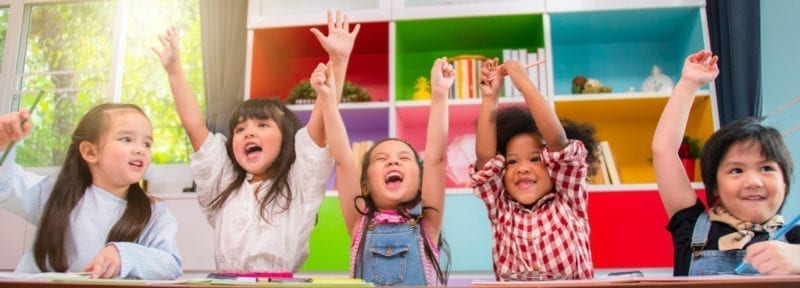 As teachers, we know that it’s nearly impossible to get students to learn material if they’re not motivated. Students may not feel connected to the topic, or they may come into class with the burden of social or personal problems. We may not even be aware of these issues, making it that much more challenging to help students become engaged. So where do we begin?
As teachers, we know that it’s nearly impossible to get students to learn material if they’re not motivated. Students may not feel connected to the topic, or they may come into class with the burden of social or personal problems. We may not even be aware of these issues, making it that much more challenging to help students become engaged. So where do we begin?
Aside from autonomy, Self-Determination Theory denotes relatedness (sometimes called belongingness) as one of the pillars of intrinsic motivation. Without feeling connected to their learning, students are likely to stay unmotivated.
However, when children feel that they belong—that they are a positive and active member of a community—this acts as a foundation for successful learning, and motivates them to continue their valuable contributions.
While we may not be able to change many external factors affecting our students’ lives, we do have the power to make their life at school more relevant to them as individuals. This can help to spark interest and intrinsic motivation, setting students up for long-term learning success.
Why is belongingness important for language learners?
 One of the prime benefits of bilingualism is its ability to open up countless social and cultural opportunities. By incorporating a sense of relatedness in your classroom culture, you help your young language learners understand that their language skills are an asset, and that they are budding citizens of the world.
One of the prime benefits of bilingualism is its ability to open up countless social and cultural opportunities. By incorporating a sense of relatedness in your classroom culture, you help your young language learners understand that their language skills are an asset, and that they are budding citizens of the world.
Bilingual students sometimes struggle to feel a sense of belongingness in the classroom, especially if many of their classmates do not share their native language. As their teacher, it’s our job to make every student feel as though they have a place in the classroom community—to let them know they belong, and that they have a purpose.
How can I integrate belongingness in my classroom?
Use student-centered, not teacher-centered, lessons.
Teacher-centered instruction refers to the classic educational model, in which teachers provide all information while students take notes or complete pre-made assignments. In short, the teacher supplies the entire lesson, and students fill in the blanks. More and more educators are beginning to shift away from this model toward student-centered instruction, which fosters more active learning and a sense of purpose.
In a student-centered instructional model, most of the “teaching” is done by students themselves. While teachers provide subject matters and relevant guidelines, students are in charge of researching and compiling information, then sharing their discoveries with their peers. This type of lesson can more effectively connect with students, because it involves them directly in the learning process and allows them the agency to learn subjects “their way.”
|
Message to students: “I trust you to take charge of your learning. |
Free Classroom Trial
In this 14-day trial experience, you will be given a teacher’s version of our Fun English for Schools classroom.
Celebrate diversity.

No class is ever quite the same, because each student we encounter is entirely unique. And yet, we spend minimal time asking students to share their perspectives. Imagine how much we could learn from students if we allowed them the chance to teach us!
Celebration of diversity could be a “Word of the Day” in different languages, celebrations of various holidays, or conversations about family traditions. It can happen every day in the small interactions you have with students—not just a designated “cultural day” or event.
By consistently celebrating variation in culture, background, and personality in your classroom, you show students that their learning community accepts and values them for all their differences, easing the anxiety that they might not belong.
|
Message to Students: “You have learned valuable things outside of our class that make you interesting and important.By sharing your knowledge with us, you enrich our community and make us stronger and more complete.” |
Let kids create the classroom culture as much as possible.
Culture exists within the classroom, as well. It’s in your daily routines, the relationship you have with students, and the interactions they have with each other. Most teachers spend considerable time cultivating their classroom community expectations before school even begins, which leaves little room for authentic culture to grow from students themselves.
To truly help students feel that they belong in a classroom community, they must feel that it is theirs. Spend some time at the start of the year—or even halfway through!—to let students build the classroom culture around their own values. Let them write the classroom rules, solve classroom problems, and hold classmates accountable. You’ll be surprised at how many good ideas they’ll come up with!
|
Message to students: “This classroom is your space, and these people are your community. |
Free Classroom Trial
In this 14-day trial experience, you will be given a teacher’s version of our Fun English for Schools classroom.



